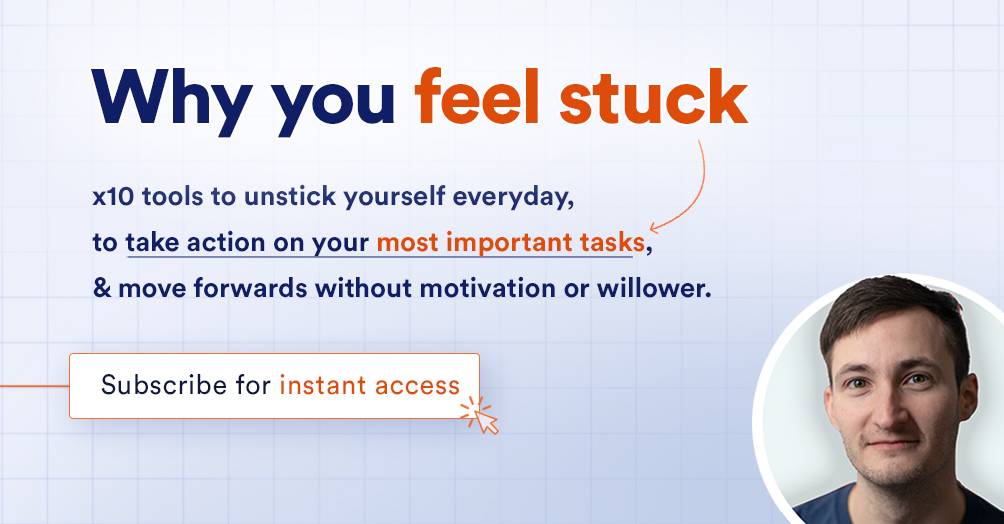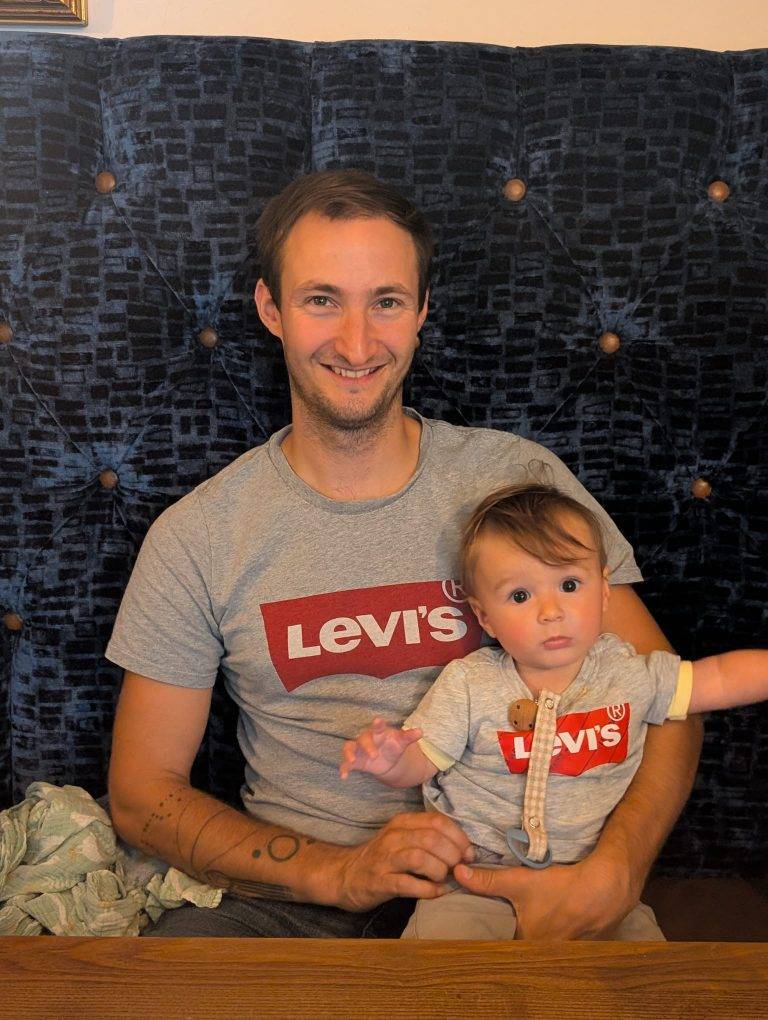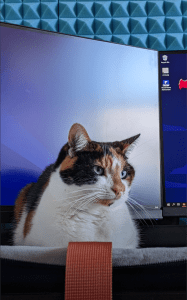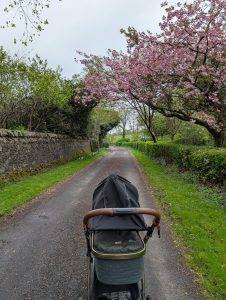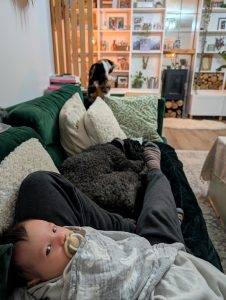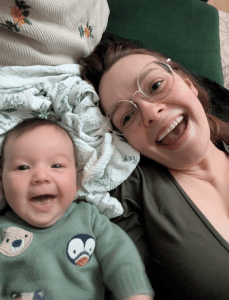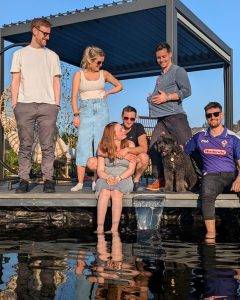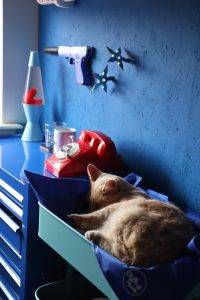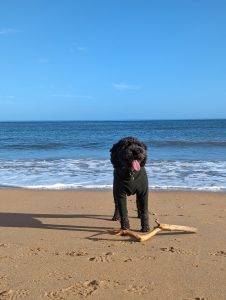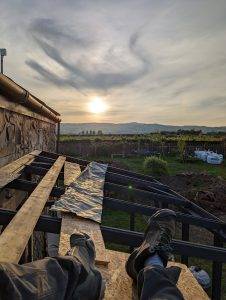I’ll not tease you, here’s my solution, which is painfully simple:
The only way to work less is…🥁🥁🥁
Stop working as much!
If you want a 3 day workweek, stop working 2 days a week.
So simple 😅
But simple doesn’t mean easy.
In fact, this might be one of the hardest things you’ll do as a solopreneur.
Just telling you to work less doesn’t help you at all;
We’ve all spent years reinforcing hard work habits which don’t help us:
- ❌ If I want to get ahead, I just need to work harder
- ❌ Succesful people work longer hours.
- ❌ I’ll start working less “when”…
- ❌ People admire me for my work ethic
These are all false narratives our work-obsessed culture paints for us.
Don’t believe me? Just try searching for #entrepreneur on X or Threads.
The longer we’ve been working, the more firmly these work habits are rooted.
Even long after I no longer believe in theese statements, I continued to work long hours out of sheer habit.
Eventually I gathered an arsenal of powerful tools which helped me break free of my default behaviours & learn HOW to work less…
HOW do we start working less?
We already know how to work less.
We just cut out hours.
But we don’t know how to accomplish “the how”
There’s still a million things on our todo list;
We’re not managing to get it all done as it is, how on earth would we manage if we just cut our work hours in half?
This is why everyone thinks they will work less “when”…
- “When I’ve cleared my plate, I’ll work less.”
- “When I have enough money to hire help, I’ll work less”
- “When I’ve reached my income goal, I’ll work less.”
When will never come.
The great paradox of productivity is that being productive only creates more work to do.
Here’s the uncomfortable truth about working less:
Things will slip.
Things will get missed.
It’s learning to be ok with that, that’s the hard part.
And it never gets easier.
Every time I close my laptop at 2pm I still feel that pang of guilt wash over me; the familiar lure of one more email, one more notification.
The hardest part isn’t getting everything done in less time, it’s giving yourself permission to actually stop working.
I’ve spent years systemising my solo business, automating processes, and delegating low value tasks so I can work ON the business isntead of IN the business.
But none of that matters if I can’t just close the laptop and walk away.
I eventually realised the issue preventing me from cutting my workweek wasn’t a productivity issue, it was a mindset issue…
The work addiction
Let’s be honest – most freelancers are addicted to work.
I don’t mean we love what we do (though many of us do).
When I first tried to implement a 3-day workweek, I’d wander into the office to play some videogames, only to find myself checking emails. Before I knew it, hours had flashed by and I was working on a day off.
For task-focussed people, the pull of work is powerful and real. It gives us dopamine hits. It makes us feel productive and valuable. It’s an easy way to avoid the discomfort of unstructured time.
We’re literally addicted to the feeling of being continuously busy, of checking things off lists, of responding to messages, of feeling needed.
Breaking this addiction requires recognizing it for what it is – not dedication, not passion, but an unhealthy relationship with productivity.
So this week on Life by Design, I’ll share x20 simple solutions that helped me break that physcological default of working harder.
Ironically when I started working shorter hours, just after little Fun arrived, I found i was suddenly getting MORE done.
My quantity of work was the same.
The difference was the WHAT.
With limited time on my hands, I suddenly stopped sweating the small stuff,
And started working on the critical tasks that had been lurking at the bottom of my to-do list for far too long.
Working less means getting more done.
Everyone online seems to want to teach you how to do more, but no-one teaches you how to do LESS…
For years I was one of those productivity addicts obsessed with getting more done with what little time I have.
Want to know a recipe for burnout?
Trying to fit an impossible amount of tasks into a time box that won’t fit them.
Most people start with the most comfortable and easy to deal with tasks.
Then procrastinate on the hard important stuff until it’s too late and they have no energy left.
“Oh well, put it off till tomorrow”
Repeat forever.
When you’re burned out, your work suffers.
You become distracted. And when your distracted, you get distracted more easily,
which means your even more burned out,
And when your willpower is low it’s easier to work on low value distracting tasks.
It’s a cruel loop.
💥 You will ALWAYS have more to do, than you have time to do it.
We just need to get comfortable with the idea that you won’t get everything done,
stop when it’s time to stop,
and learn to use our valuable time to work on only the things that need to get done right now.
Ironically, when I started working less, I actually get more done.
When you only have a few hours a day, you only have enough time to work on your most important tasks,
and that time pressure forces you to focus on the truly important tasks.
Which leads me into my first experiment with working less…
x20 experiments in working less
1 Parkinson’s law
“work expands to fill the time available for its completion.”
- If you give yourself 2 weeks for a task that could take 2 days, it will likely stretch to 2 weeks because of procrastination, distractions, or over-polishing.
- Deadlines shape productivity more than the actual workload.
- Without constraints, tasks tend to bloat
Set short deadlines and working hours to force prioritization.
2 The 80/20 principle
80% of results come from 20% of efforts.
- Not all tasks are equal. A small fraction of what you do generates most of your income, growth, or client satisfaction.
- High-value tasks (e.g., pitching the right clients, delivering core client work, refining offers) produce the majority of results.
- Low-value tasks (e.g., tweaking your website endlessly, answering non-essential emails, over-designing proposals) eat time but add little impact.
Identify your 20%: Marketing, building systems, client relationships
Eliminate or delegate the 80%: admin, design revisions, emails
3 Time blocking
Use time blocking to prevent tasks from spilling over.
- Prevents tasks from spilling over and eating your day.
- balance client work (urgent but not always high-value) with business-building
- Reduces decision fatigue – your day is pre-decided.
Example:
- 9–11am: Client project work
- 11–12pm: Admin & email
- 1–3pm: Marketing (content, outreach)
- 3–4pm: Learning/skill-building
Schedule your work the day before: assign fixed blocks of time to specific tasks instead of working from your inbox.
4 Deep work
Deep work is focused, distraction-free work on cognitively demanding tasks that create the most value.
- Eliminate distractions (no notifications, social media, or multitasking).
- Work in long, uninterrupted blocks of time.
- Prioritize high-value tasks that move your freelance business forward.
Block 2–3 hours in the day when your energy is highest for growth tasks. Don’t allow distractions.
5 Create a schedule and stick to it
Without structure, freelancing easily becomes chaotic, unproductive, and overhhelming
- A fixed schedule creates boundaries between work and life
- Helps you protect time for both client work and business growth
- Reduces decision fatigue because your day is pre-planned
Decide your start and finish times and block tasks into your calendar
6 Schedule downtime or it doesn’t happen
Rest only happens if you plan for it, otherwise work will take over.
- Put leisure and breaks in your calendar like client calls.
- Protect downtime as non-negotiable.
- Treat rest as fuel for better work, not wasted time.
Block at least one break and one chunk of leisure into your weekly schedule.
7 Schedule Free Time
If you don’t fill your non-work days with meaningful activities, work will creep back in.
I schedule my free days as carefully as I schedule my work days:
8 Automation and systems
If you’re working > 40hrs/ week, you have a job, not a business.
Your most important job right now is building systems.
How to systemize your business:
📃 Document
Write down every step of your process so you can see what works and what doesn’t.
⚙️ Systemize
Turn your documented steps into repeatable systems that can run with minimal effort.
❌ Eliminate
Cut out any tasks or steps that don’t add real value or impact the end result.
💎 Optimize
Streamline and improve your process to get the same results faster and smarter.
📁 Template
Create reusable templates for anything you do more than once to save time.
🤖 Automate
Use tools and automations to remove repetitive manual work wherever possible.
👤 Outsource / Delegate
If you’ve taken this as far as you can, and it still requires human intuition, you can try delegating it to a VA, or outsourcing it to a freelancer.
♻️ Review & Repeat
Regularly refine and update your systems as your business grows and changes.
Choose one recurring task and set up a system or automation for it this week.
(use your deep work session 😉)
If you want to dive deeper into this, in #24 of Life by Design, you can subscribe for instant access to my free masterclass
9 Let go of getting everything done
You’ll never finish everything, and trying will burn you out.
You’ll be surprised how many “tasks” you can just ignore.
- Focus on what moves the needle
- Accept that some tasks can be ignored
- “Done” is better than “perfect and endless”
Each morning, I let myself “off the hook” for x3 low value tasks.
10 Fill your time with meaningful things
If you don’t plan, work will expand and consume everything
- Choose hobbies, exercise, or personal projects outside freelancing
- Schedule them like work tasks
- Fun with intention beats defaulting to scrolling or busywork
Do one non-profit generation activity this week (gym, art, volunteering, gardening)
11 Allow flexibility
Freelancing needs structure, but life will still interrupt
- Some weeks you’ll sacrifice your “day off”
- Flexibility keeps the system from breaking
- The key is to bounce back, not quit
When plans shift, reschedule missed blocks instead of abandoning them
12 Alternate between mental and phyiscal tasks
Switch between physical and mental work to stay fresh
- Don’t stack multiple heavy mental tasks in a row
- Use physical tasks as recovery time
- But only one of each type at a time
Pair one deep work block with one physical or light admin task daily
13 Schedule “whitespace” between tasks
Gaps prevent burnout and improve focus
- Back-to-back tasks drain attention
- Short breaks reset your brain
- Resting is productive
Add 10–15 minutes of downtime between calendar blocks
14 Theme your days
Dedicate whole days to categories of work
- Prevents constant context switching
- Lets you go deeper into projects
- Creates rhythm in your freelance week
Assign each weekday a focus (e.g., client work, marketing, admin)
15 Cultivate rituals
Rituals help you shift modes quickly.
Same workspace, same routine
Train your brain to associate the ritual with focus
Reduces procrastination friction
I nurture the same patter to help me enter flow state (coffee, music, starjumps, write it down, set timer, start.)
15 Triage todos before you start them
Not every task deserves your time
- Before you change tasks Ask “WHY?” before you start
- Prioritize by impact, not urgency
Each time I jump into something new, I pause to write it down first, to make sure I’m being intentional instead of being distracted
16 Delegate
Building leverage by spending money to buy time
- Know your value per hour
- Pay others who charge less than your hourto do what drains you
- Use freed time to grow your business
Pick one task this month to delegate or outsource
17 Learn to say no
Every “yes” now is a no to x5 other projects in the future
- Clients will push admin or extras onto you
- Distractions and side projects kill momentum
- Saying no protects your priorities
- The hardest person to say no to is yourself.
This week, say “no” to one task or request that doesn’t move you forward.
18 Reward yourself
Small rewards reinforce discipline and progress
- Motivation builds through incentives
- Keeps work enjoyable
- Simple pleasures work best
I play 15 mins of video games after finishing my morning flow session.
19 Have a finishing ritual
A clear end point separates work from life
- Symbolically “close” the day
- Prevents overworking
- Signals your brain to relax
My end of day ritual:
- Close all work-related tabs and apps
- Write tomorrow’s priority list
- Ring chimes
- Say “that’ll do donkey”
- Walk slowly round the garden
I Create a daily shutdown ritual
20 The Hard Stop
This forces ruthless prioritization. Time pressure is the ultimate productivity hack.
- Work crisis? It waits.
- Unfinished tasks? That’s life.
- One more email? Not happening.
I start a timer when I sit down. When it hits four hours, I shut the laptop. Four hours. That’s all I get.
The Surprising Benefits
Working a 3-day week hasn’t been easy.
Honestly?
I’m just as stressed, and I still leave the office feeling like I only achieved a fraction of what I wanted to get done.
But I felt the exact same way when I was working 6 days a week.
At least t his way I have more time for family and my interests.
Plus:
- My creative output has actually increased, not decreased
- I’m more focused and efficient on my work days
- I have more energy and enthusiasm for my clients
- I’ve rediscovered hobbies and interests outside of work
- My relationships have improved
- I feel less resentful of my work
The Reality Check
Of course what works for me might not work for you.
It’s important to treat these as tiny experiments;
Use what works for you, discard what doesn’t.
These time saving tools have helped me run a micro design agency that takes in £20k/m of revenue, manage a team of 4, whilst still having time (just) to take care of baby, write my book, and work on the grand garden project.
I’ve been tracking my daily working hours 👇

Has it been easy?
No.
I don’t hit my 3-day target every week. Some weeks, client emergencies or deadlines require more time. Some weeks, I give in to the pull of work on my days off.
But I’m getting better. And each time I successfully close my laptop and leave the office early, I prove it’s possible.
The goal isn’t perfection. The goal is progress. And slowly but surely, I’m building a business that serves my life, rather than a life that serves my business.
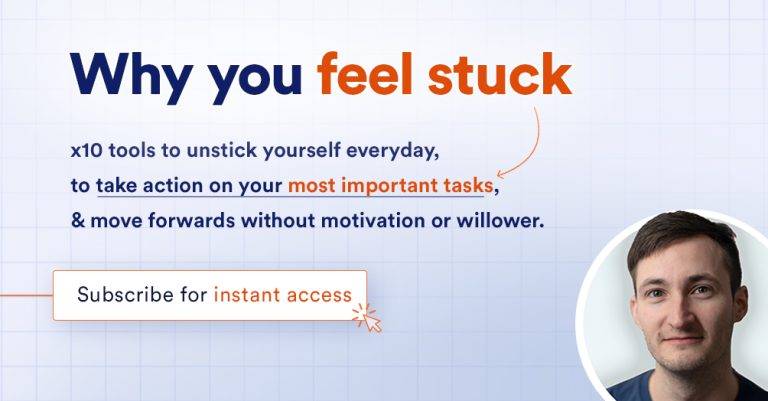
Ready to cut your workweek in half?
Subscribe for instant access to my masterclass on systemising your one person business.
